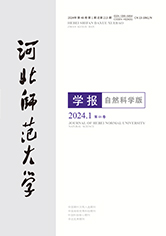期刊信息

- 刊名: 河北师范大学学报(自然科学版)Journal of Hebei Normal University (Natural Science)
- 主办: 河北师范大学
- ISSN: 1000-5854
- CN: 13-1061/N
- 中国科技核心期刊
- 中国期刊方阵入选期刊
- 中国高校优秀科技期刊
- 华北优秀期刊
- 河北省优秀科技期刊
Surface Charging Simulation of Spacecraft in Different Orbit
摘要/Abstract
针对航天器表面充放电效应带来的影响,基于粒子分室法(PIC),利用SPIS(spacecraft plasma interaction system)模拟了低地球轨道(LEO)和地球同步轨道(GEO)上航天器表面的带电情况,分析了航天器表面充电电位、充电时间、航天器周围等离子体电荷分布等规律.结果显示,由于GEO上等离子体温度高、浓度低,而LEO上等离子体温度低、浓度高,因此,GEO上航天器表面电位远大于LEO上航天器表面电位;航天器的尾迹效应对周围等离子体分布影响显著;由于传统估算公式没有考虑航天器表面电子聚集速度降低的问题,因此,SPIS模拟计算航天器表面电位达到稳定状态的充电时间要比估算值大.
Considering the effects of surface charging on spacecraft,based on the particle-in-cell (PIC) method,the surface charging of spacecraft in low earth (LEO) and geosynchronous earth orbit (GEO) were simulated by spacecraft plasma interaction system (SPIS),and the surface charging potential,charging time and charge distribution of plasma around spacecraft were also analyzed.The results show that the surface potential of spacecraft in GEO is larger than that in LEO,because of the high temperature and low concentration plasma in GEO,and the low temperature and high concentration plasma in LEO.The plasma distribution around spacecraft is influenced evidently by the wake effect of spacecraft.The decreasing of the electron collected speed on the spacecraft surface is not considered in the traditional estimated formula,therefore,the charging time of the spacecraft surface charging potential increasing to a stability condition simulated by SPIS is longer than that calculated by the estimated formula.
关键词
参考文献 23
- [1] 师立勤.低轨道航空器辐射环境和表面充电效应研究[D].合肥:中国科技大学,2011.
- [2] 王立,秦晓刚.空间材料表面充放电性能试验评估方法研究[J].真空与低温,2002,8(2):83-87.
- [3] 王立.介质材料的带电机理与表面结构的关系[J].真空与低温,1995,1(2):66-68.
- [4] 闫小娟.卫星介质充电机理和试验研究[D].北京:中国科学院空间科学与应用研究中心,2008.
- [5] GARRENTT H B.The Charging of Spacecraft Surfaces[J].Reviews of Geophysics and Space Physics,1981,19(4):577-616.
- [6] 李小江.空间等离子体环境对电子设备的充放电效应[D].西安:西安电子科技大学,2009.
- [7] 于登云.太阳风暴对航天器的影响与防护[M].北京:国防工业出版社,2012:79-80.
- [8] VILOET M D,FREDERICKSON A R.Spacecraft Anomalies on the CRRES Satellite Correlated with the Environment and Insulator Samples[J].IEEE Transactions on Nuclear Science,1993,40(6):1512-1520.
- [9] 薛梅.高压砷化镓太阳阵ESD效应及防护技术研究[D].天津:天津大学,2007.
- [10] LANZEROTTI L J,BREGLIA C,MAURER D W,et al.Studies of Spacecraft Charging on a Geosynchronous Telecommunications Satellite[J].Advances in Space Research,1998,22(1):79-82.
- [11] 田立成,石红,李娟,等.航天器表面充电仿真计算和电位主动控制技术[J].航天器环境工程,2014,29(2):144-149.
- [12] 庞永江,徐跃民.地面实验室模拟空间等离子体环境的初步测试[J].空间科学学报,2001,21(3):260-265.
- [13] 庞永江.地面实验室模拟空间等离子体环境及太阳能电池片效应初步实验研究[D].北京:中国科学院空间科学与应用研究中心,2001.
- [14] 杨昉,师立勤,刘四清,等.低轨道航天器的表面充电模拟[J].空间科学学报,2011,31(4):509-513.
- [15] 贾瑞金.地面试验室模拟空间等离子体环境的初步测试[J].航天器环境工程,2005,22(3):163-167.
- [16] 杨集,陈贤祥,周杰,等.尾迹对卫星周围等离子体扰动特性分析[J].宇航学报,2010,31(2):531-535.
- [17] SARRAILH P,MATÉO-VÉLEZ J C,ROUSSEL J F,et al.Comparison of Numerical and Experimental Investigations on the ESD Onset in the Inverted Potential Gradient Situation in GEO[J].IEEE Transactions on Plasma Science,2012,40(2):368-379.
- [18] ROUSSEL J F.Spacecraft Plasma Environment and Contamination Simulation Code:Description and First Tests[J].Journal of Spacecraft and Rockets,1998,35(2):205-211.
- [19] SIGUIER J M,INGUIMBERT V,SARRAILH P,et al.Parametric Study of a Physical Flashover Simulator[J].IEEE Transactions on Plasma Science,2012,40(2):311-320.
- [20] 杨集,陈贤祥,夏善红.低轨道卫星表面充电模拟[J].微纳电子技术,2007(7):25-27.
- [21] 买胜利.航天器太阳电池阵表面带电的PIC数值模拟研究[D].兰州:中国空间科学技术研究院兰州物理研究所,2006.
- [22] HUR M S,KIM S J,LEE H S.Particle-in-cell Simulation of a Neutral Beam Source for Materials Processing[J].IEEE Transactions on Plasma Science,2002,30(1):110-111.
- [23] DAWSON J M.Particle Simulation of Plasmas[J].Rev Mod Phys,1983,55:403-447.
